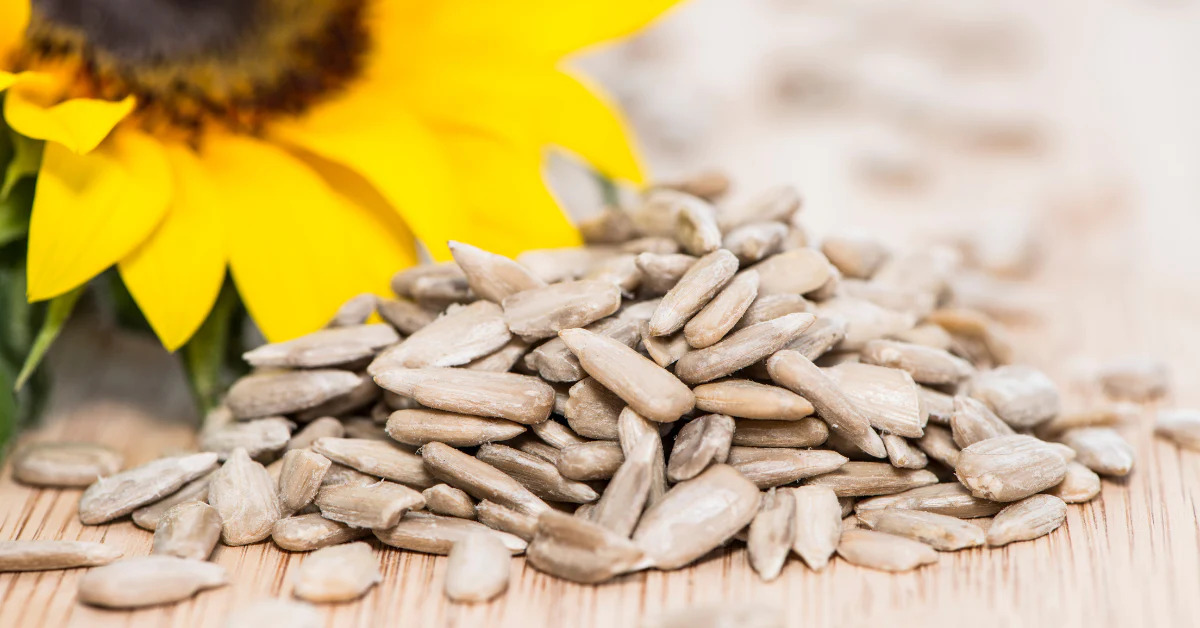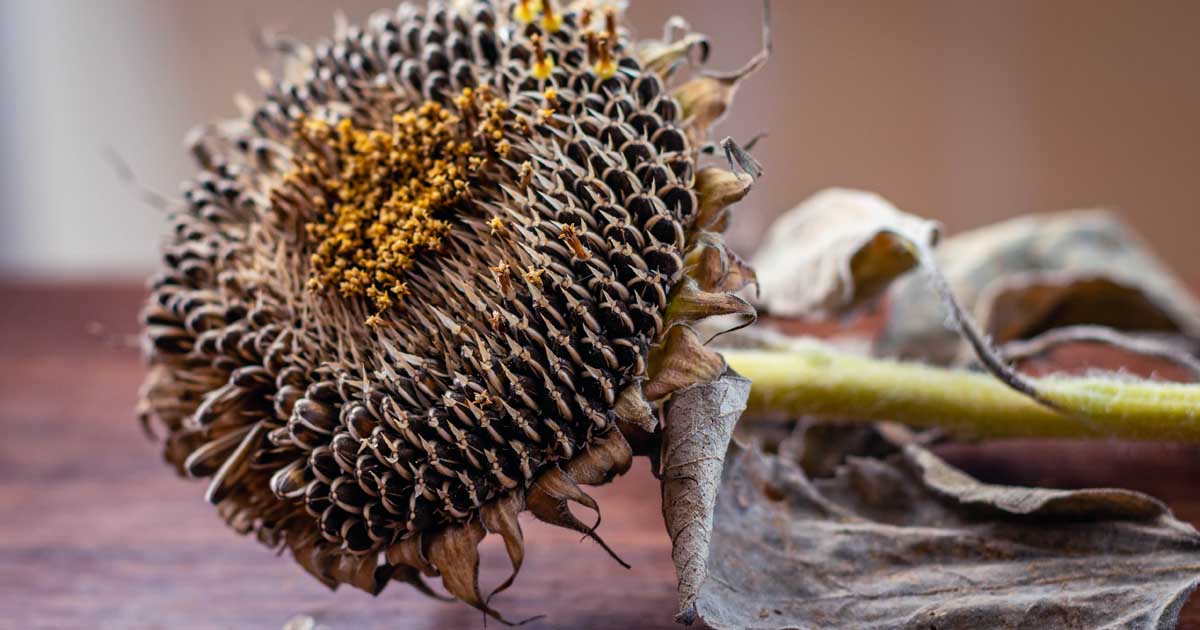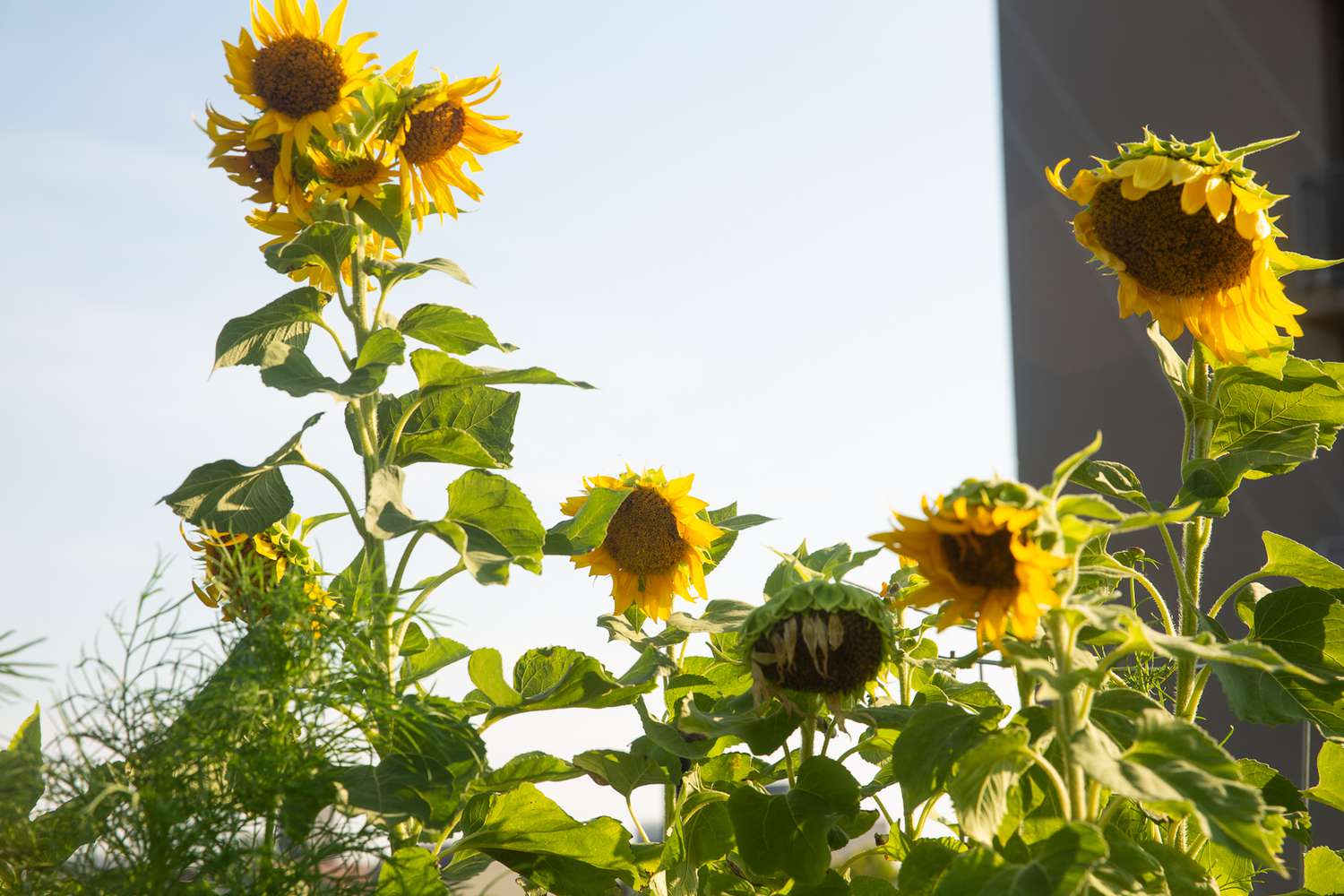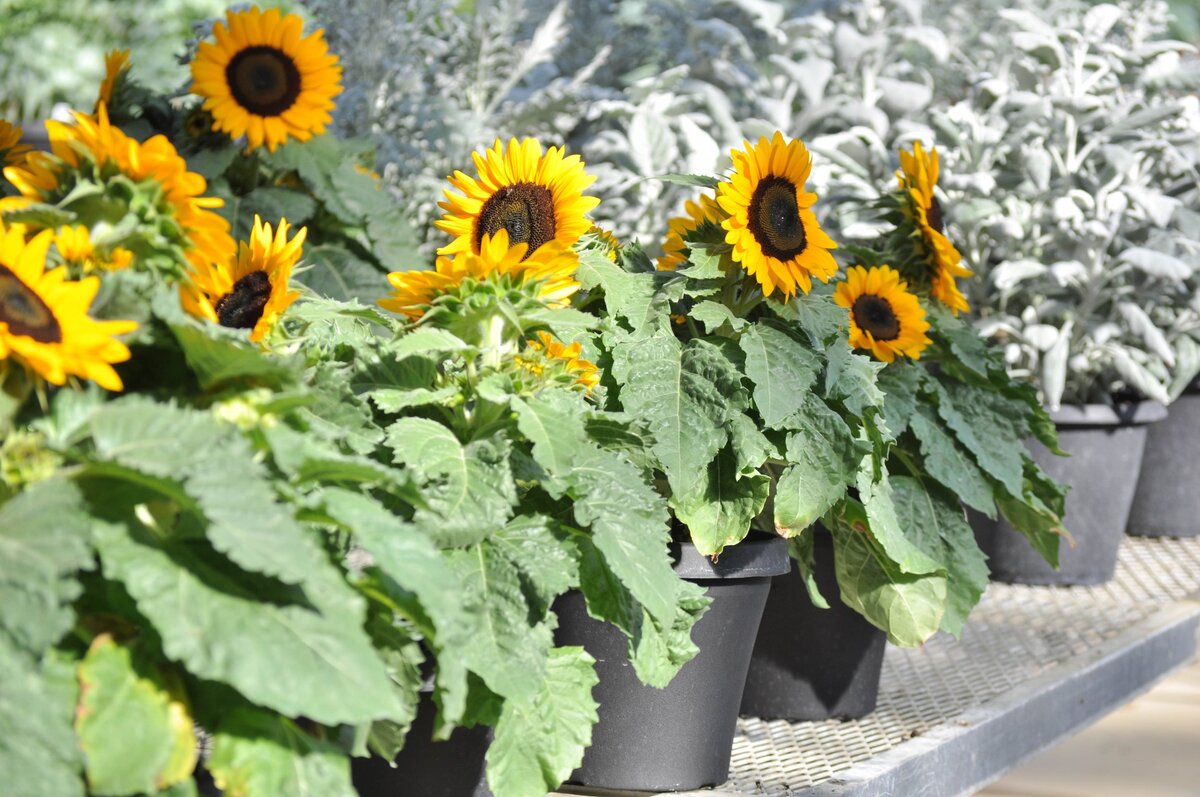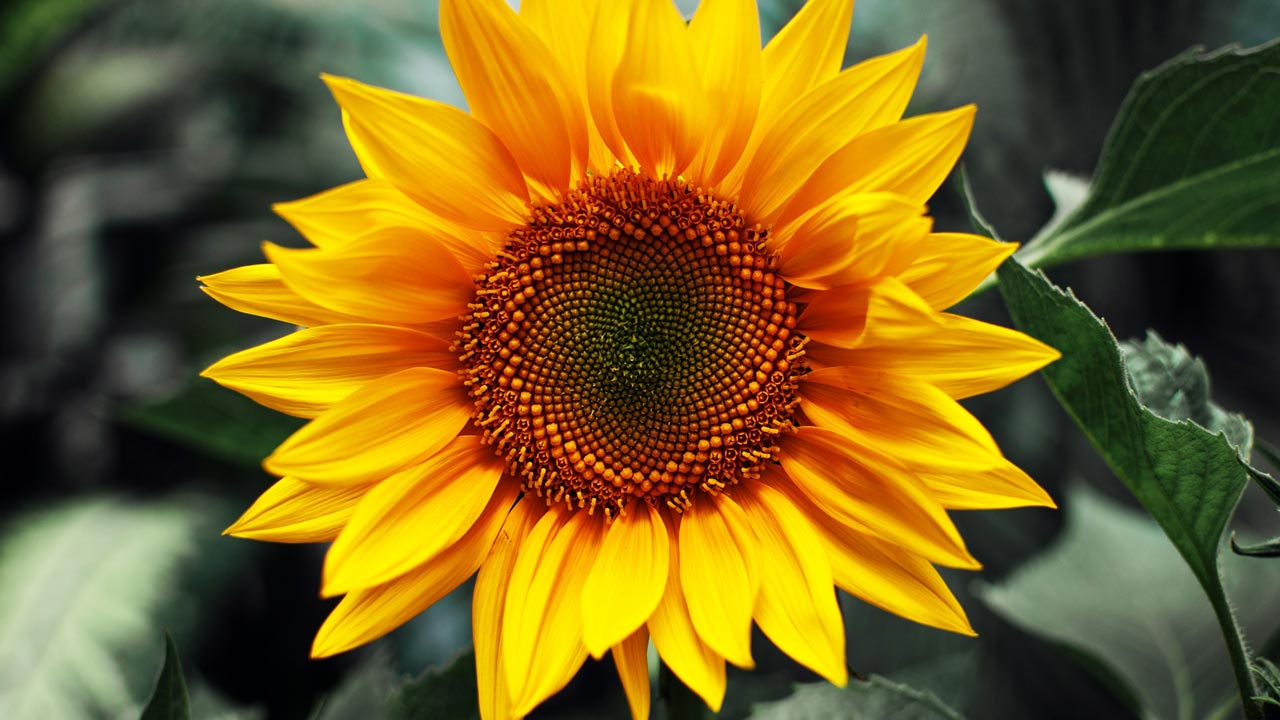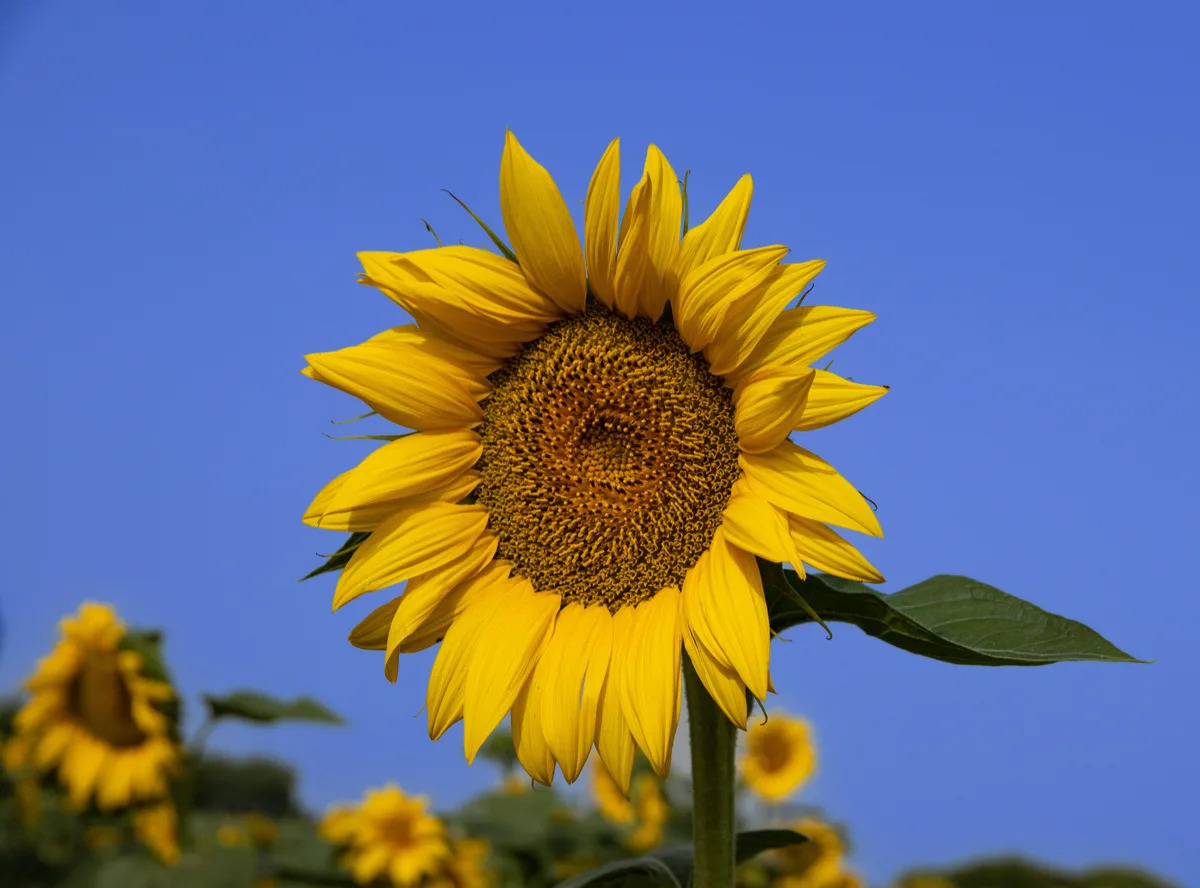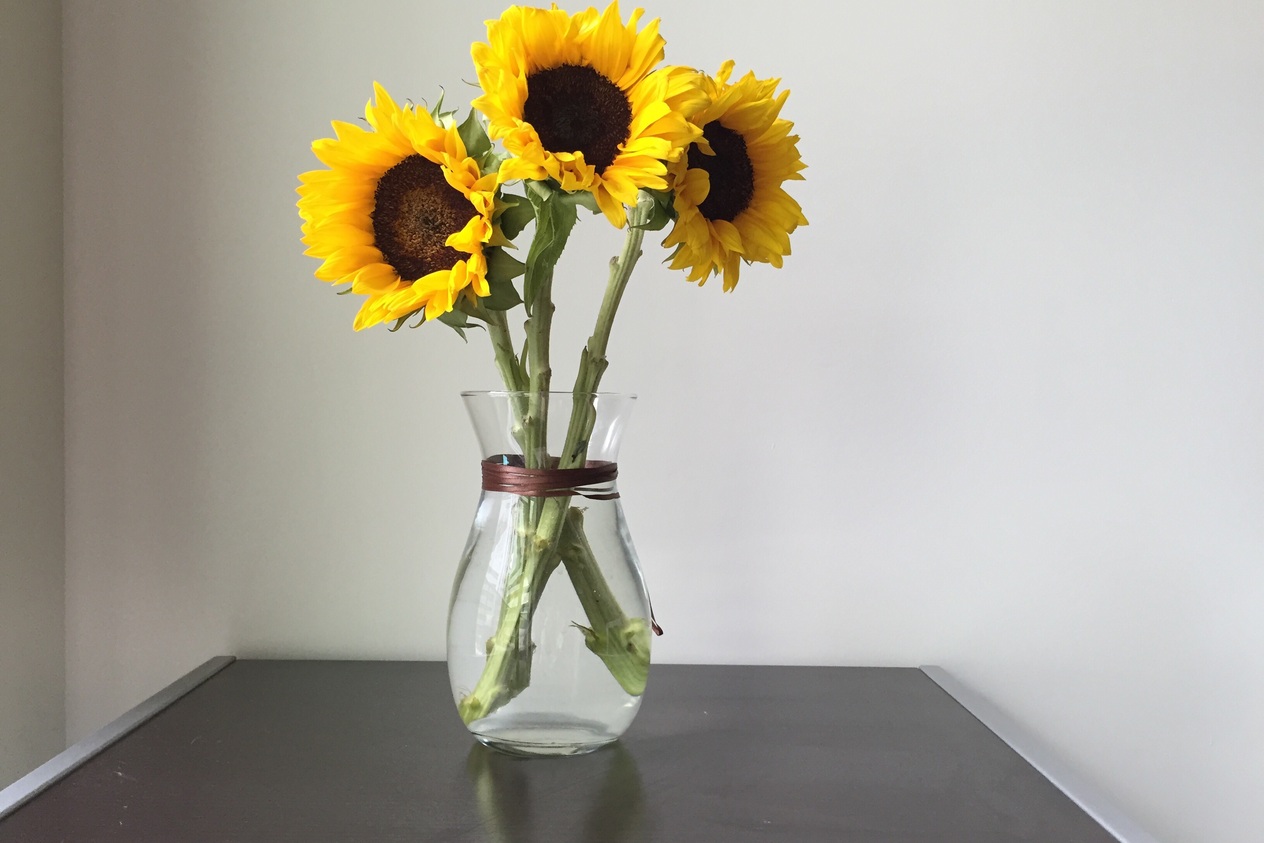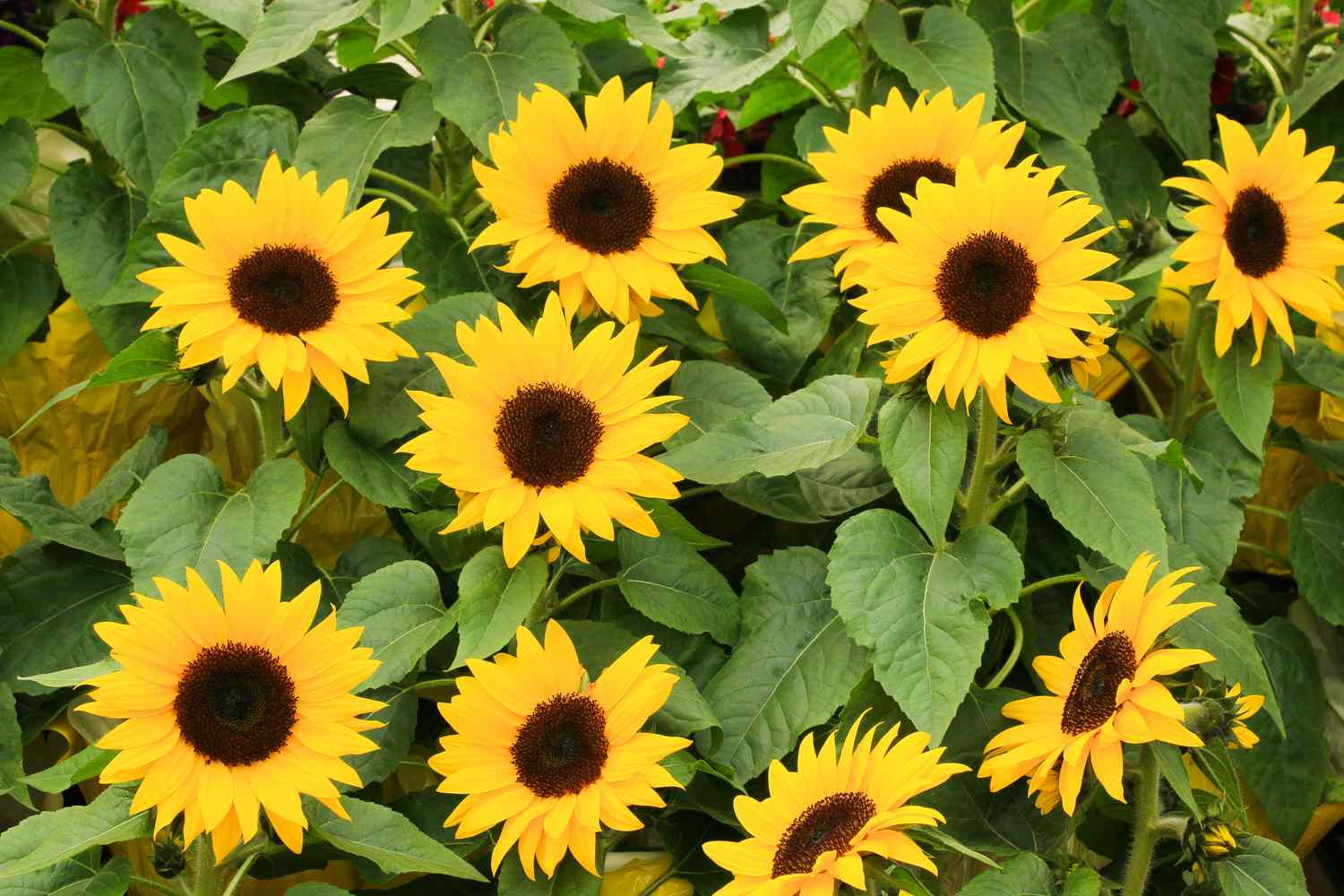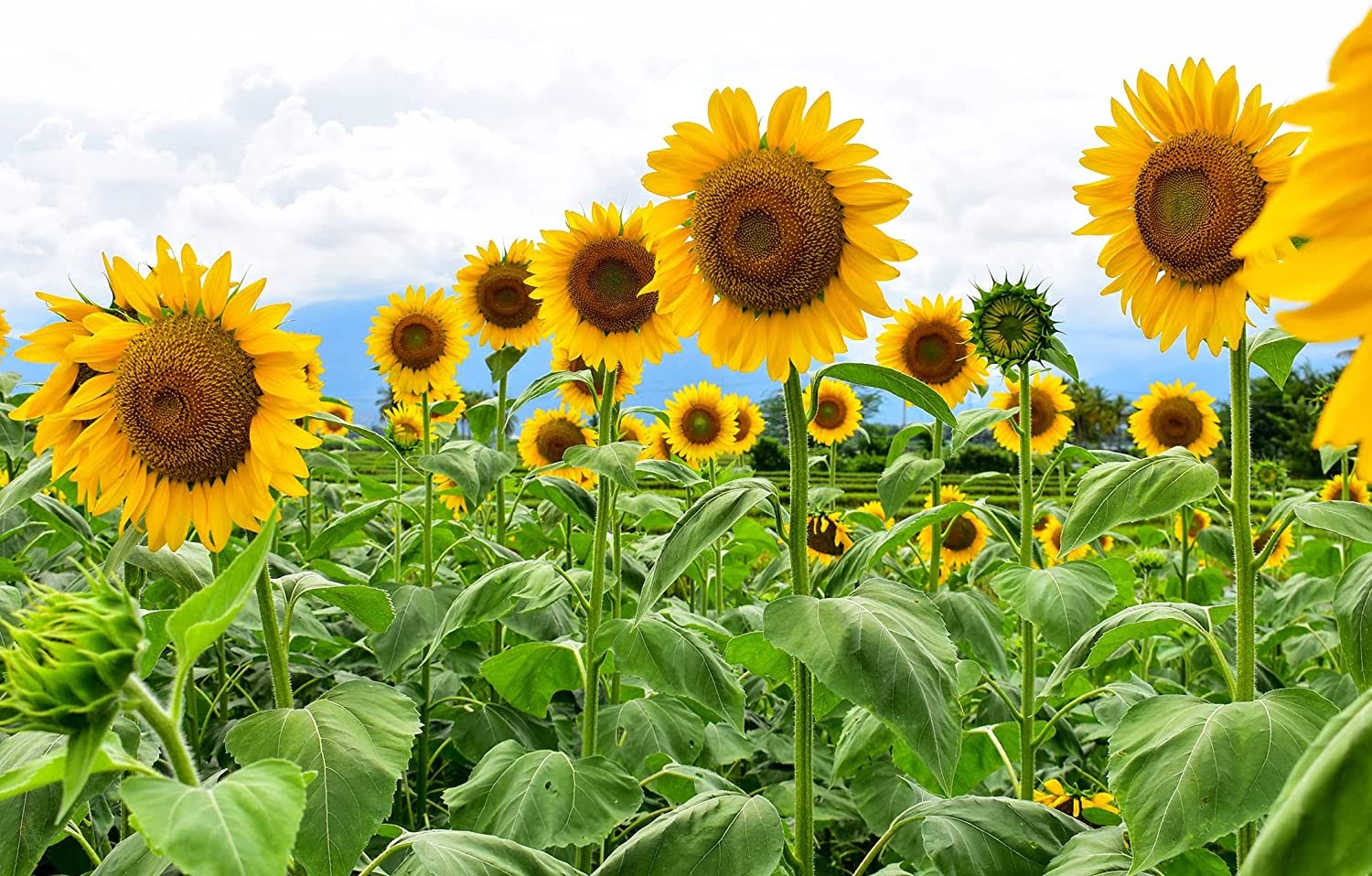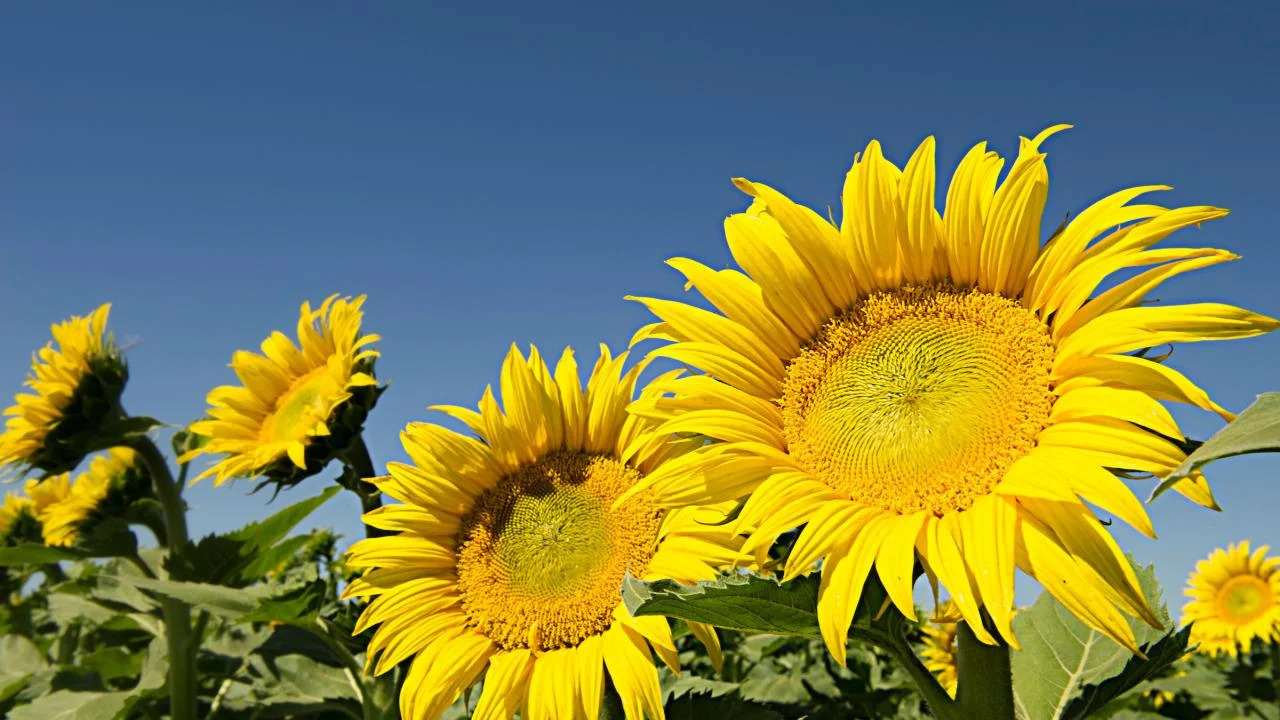Home>Types of Gardening>Ornamental Gardening>How Do Sunflowers Reproduce Sexually


Ornamental Gardening
How Do Sunflowers Reproduce Sexually
Modified: January 22, 2024
Learn how sunflowers reproduce sexually in ornamental gardening. Discover the process of pollination and seed formation in sunflowers.
(Many of the links in this article redirect to a specific reviewed product. Your purchase of these products through affiliate links helps to generate commission for Chicagolandgardening.com, at no extra cost. Learn more)
Table of Contents
Introduction
Welcome to the fascinating world of sunflowers, where nature's intricate processes unfold in stunning displays of beauty and life. Sunflowers, with their vibrant petals and towering stems, have captivated the human imagination for centuries. In this article, we will embark on a journey to uncover the secrets of how sunflowers reproduce sexually, delving into the intricate mechanisms that drive the propagation of these iconic plants.
From the sun-drenched fields to home gardens, sunflowers stand as a symbol of resilience and vitality. Their remarkable ability to reproduce through sexual means is a testament to the marvels of nature's design. By understanding the reproductive processes of sunflowers, we gain a deeper appreciation for the interconnectedness of life on our planet.
Throughout this exploration, we will dissect the anatomy of sunflowers, unravel the intricacies of sexual reproduction, and shed light on the pivotal role of pollination. Furthermore, we will delve into the captivating journey of seed development in sunflowers, witnessing the miraculous transformation from flower to seed.
Join us as we unravel the captivating story of how sunflowers harness the power of sexual reproduction to perpetuate their lineage and bring forth the next generation of these majestic blooms. Let's embark on this enlightening journey into the heart of sunflower reproduction, where nature's ingenuity takes center stage.
Anatomy of a Sunflower
Before delving into the intricate process of sexual reproduction, it is essential to grasp the remarkable anatomy of the sunflower. These botanical marvels boast a striking composition that is both visually captivating and functionally vital to their reproductive prowess.
The most prominent feature of a sunflower is its large, vibrant flower head, which comprises hundreds of individual florets. The outer ring consists of petal-like structures called ray florets, while the inner disc houses the densely packed, tubular disc florets. This distinctive arrangement serves as a beacon for pollinators, guiding them towards the heart of the flower.
Beneath the resplendent display of petals and florets lies the receptacle, a specialized structure that supports the florets and serves as the epicenter of seed development. As the flower matures, the receptacle swells and transforms into the familiar edible seeds that adorn the face of the sunflower.
A towering stem, adorned with broad, coarsely toothed leaves, provides the foundational support for the sunflower, elevating its flower head towards the sun. This characteristic heliotropism, or sun-tracking behavior, allows the sunflower to maximize its exposure to sunlight, a crucial factor in its reproductive success.
Understanding the intricate anatomy of a sunflower sets the stage for unraveling the marvels of sexual reproduction within these botanical wonders. The next step in our exploration delves into the captivating realm of sexual reproduction in sunflowers, where nature’s ingenuity takes center stage.
Sexual Reproduction in Sunflowers
As we venture into the realm of sexual reproduction in sunflowers, we encounter a tapestry of intricate processes that culminate in the creation of new life. At the heart of this botanical ballet lies the fusion of male and female reproductive structures, a harmonious union that perpetuates the lineage of sunflowers.
The male reproductive organs of a sunflower reside within the stately disc florets nestled at the core of the flower head. Each of these tubular florets houses stamens, the male reproductive structures that bear anthers laden with pollen. These minuscule grains, rich in genetic material, serve as the potent agents of fertilization.
Conversely, the female reproductive apparatus of the sunflower manifests in the form of the stigma, style, and ovary nestled within each floret. The stigma, often likened to a delicate brush, captures the airborne pollen grains, while the style serves as a conduit for the pollen to reach the ovary, where the magic of fertilization transpires.
When the conditions are optimal, the dance of pollination commences, as pollinators, wind, or even gravity facilitate the transfer of pollen from the anthers to the awaiting stigmas. This pivotal moment sets the stage for the fusion of male and female gametes, a wondrous union that initiates the journey towards seed development.
The intricate choreography of sexual reproduction in sunflowers unveils the timeless saga of life perpetuation, where the convergence of pollen and stigma sets in motion the transformative journey from flower to seed. As we unravel the mysteries of this captivating process, we gain a profound appreciation for the intricate mechanisms that underpin the perpetuation of sunflower lineage.
The Role of Pollination
Pollination serves as the pivotal catalyst in the reproductive odyssey of sunflowers, orchestrating the intricate exchange of genetic material that fuels the creation of future generations. This vital process, facilitated by an array of agents ranging from buzzing insects to gentle breezes, forms the cornerstone of sunflower reproduction.
One of the primary actors in the grand theater of pollination is the honeybee, whose diligent foraging endeavors result in the transfer of pollen from one sunflower to another. As these industrious pollinators flit from bloom to bloom in search of nectar and pollen, they inadvertently effectuate the crucial union of male and female gametes, thereby perpetuating the genetic diversity of sunflowers.
While honeybees stand as iconic pollinators, an ensemble cast of insects, including bumblebees, butterflies, and beetles, partake in the pollination saga, each contributing to the intricate tapestry of reproductive success. Moreover, the gentle caress of the wind, carrying aloft ethereal pollen grains, plays a pivotal role in the cross-pollination of sunflowers, fostering genetic variability within populations.
Notably, the sunflower’s heliotropic behavior, wherein the flower head dutifully tracks the sun’s arc across the sky, enhances the likelihood of pollination. By basking in the sun’s warm embrace, the flower head becomes a beacon for pollinators, guiding them towards the heart of the sunflower and facilitating the exchange of vital genetic material.
As the symphony of pollination unfolds, the intricate choreography of floral display, nectar production, and pollen dissemination harmonizes to perpetuate the lineage of sunflowers. The ensuing fusion of male and female gametes within the sunflower’s florets sets the stage for the miraculous transformation from flower to seed, thereby ensuring the continuity of these resplendent botanical marvels.
Seed Development in Sunflowers
Following the enchanting ballet of pollination, the sunflower embarks on a transformative journey of seed development, wherein the fertilized florets undergo a series of remarkable metamorphoses, culminating in the creation of the iconic sunflower seeds. This captivating process unfolds within the receptacle, the very heart of the flower head, where the alchemy of life transpires.
As fertilization takes root within the sunflower’s florets, the ovary swells and matures into the achene, the botanical term for the sunflower seed. Encased within the protective embrace of the achene, the embryonic seedling takes shape, harboring the genetic legacy of its predecessors and the potential to burgeon into a new sunflower plant.
The receptacle, having fulfilled its role in facilitating the union of male and female gametes, undergoes a remarkable metamorphosis of its own. Swelling with nourishment and vitality, it transforms into the fleshy, edible base known as the sunflower’s seed-carrying head, a testament to the botanical ingenuity that underpins the perpetuation of life.
Amidst this wondrous transformation, the sunflower’s seed head undergoes a captivating display of mathematical precision, as the florets arrange themselves in mesmerizing spirals, following the dictates of the Fibonacci sequence. This mesmerizing pattern not only captivates the eye but also optimizes the distribution of seeds, ensuring the efficient propagation of future generations.
As the seeds mature within the sunflower’s iconic head, they amass vital nutrients and energy, preparing to embark on their own journey of germination and growth. With their rich reservoirs of oils and proteins, sunflower seeds serve as a vital source of sustenance for a myriad of creatures, including humans, underscoring their significance in the intricate web of life.
The captivating saga of seed development in sunflowers encapsulates the timeless narrative of renewal and continuity, where the convergence of pollination and seed maturation perpetuates the lineage of these botanical marvels. As we marvel at the iconic sunflower seeds, we bear witness to the enduring legacy of life perpetuation within the resplendent world of sunflowers.
Conclusion
Our exploration into the realm of sunflower reproduction has unveiled a captivating saga of botanical marvels, where the intricate processes of sexual reproduction, pollination, and seed development converge to perpetuate the lineage of these resplendent blooms. From the vibrant dance of pollinators to the transformative journey of seed maturation, the life cycle of sunflowers stands as a testament to nature’s ingenuity and resilience.
Through delving into the anatomy of sunflowers, we gained a profound appreciation for the structural marvels that underpin their reproductive prowess. The towering stems, vibrant flower heads, and intricate receptacles serve as the architectural foundation for the captivating saga of sunflower reproduction.
The symphony of sexual reproduction in sunflowers unveiled the harmonious union of male and female reproductive structures, culminating in the transformative journey from flower to seed. The delicate choreography of pollination, facilitated by a diverse cast of pollinators and the gentle caress of the wind, serves as the pivotal catalyst for the perpetuation of sunflower lineage.
As we delved into the captivating realm of seed development, we bore witness to the miraculous metamorphosis of fertilized florets into the iconic sunflower seeds. The receptacle, once the epicenter of pollination, swelled with vitality and nourishment, nurturing the embryonic seeds and ensuring the continuity of the sunflower’s genetic legacy.
In conclusion, the captivating narrative of sunflower reproduction offers a glimpse into the intricate web of life, where the convergence of biological processes perpetuates the lineage of these iconic blooms. As we marvel at the resplendent fields of sunflowers, we are reminded of the enduring legacy of nature’s design and the timeless cycle of renewal that unfolds within the heart of these botanical marvels.
